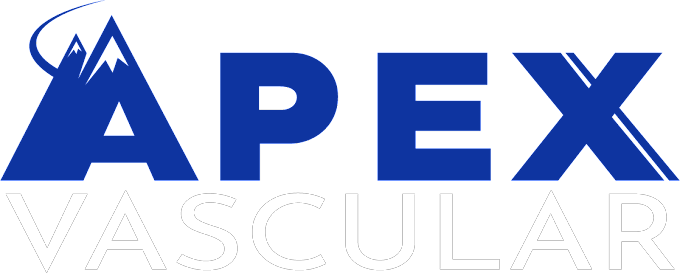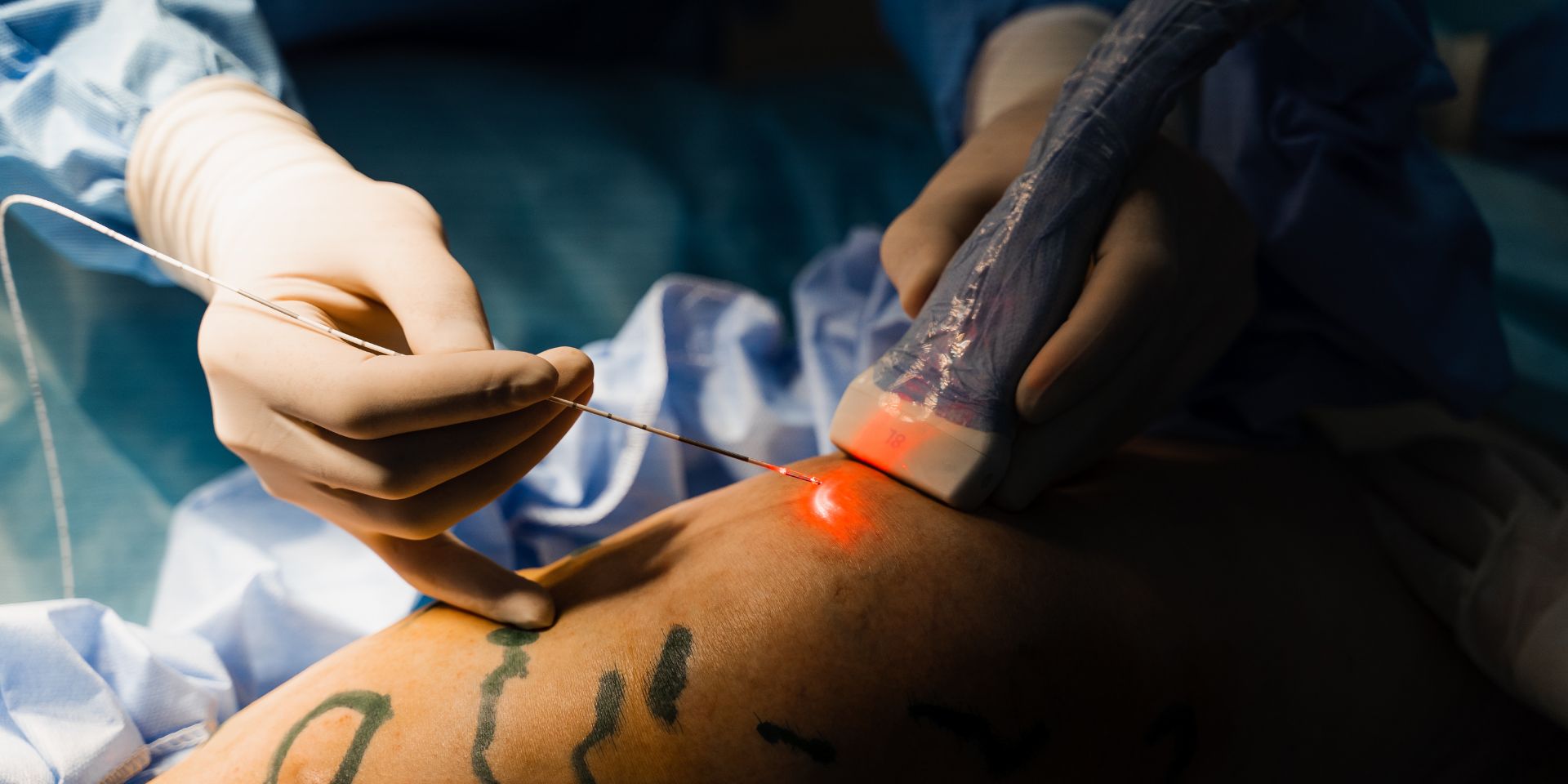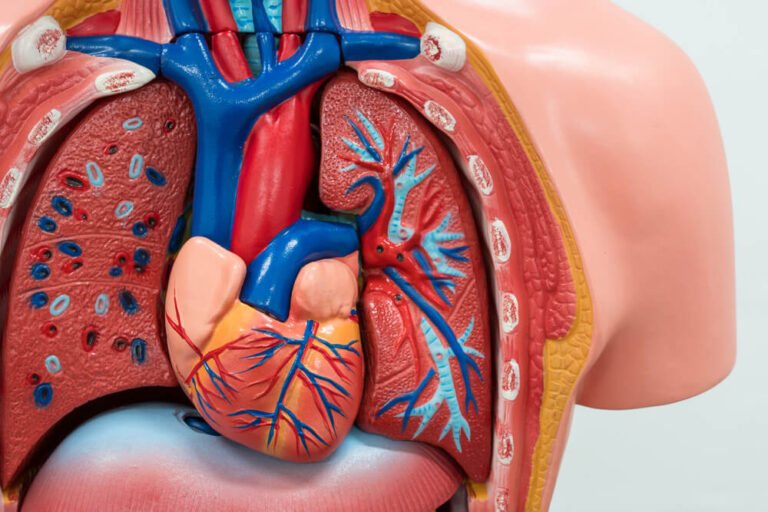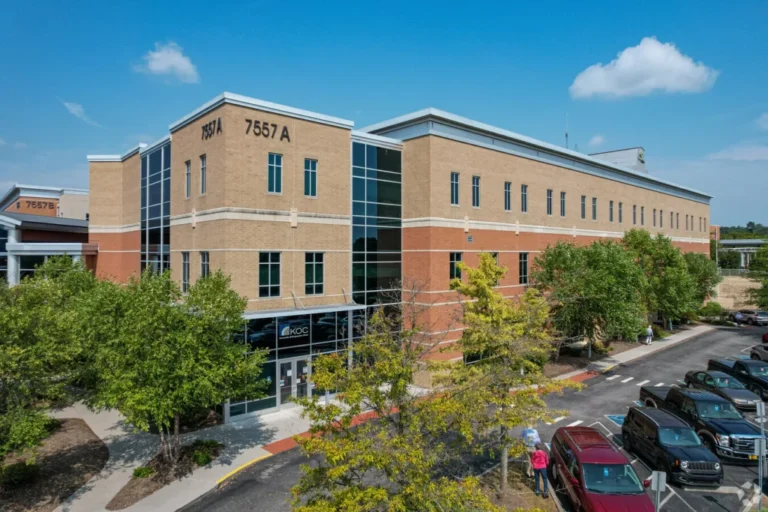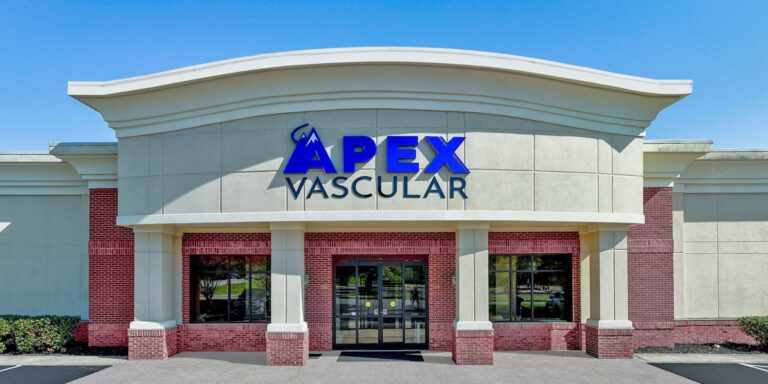Vascular diseases encompass a range of conditions affecting the blood vessels, including arteries and veins. Understanding the causes, symptoms, and treatment options for common vascular diseases is crucial for early detection and effective management, as these diseases can lead to serious complications like heart attacks and strokes. In this blog, we’ll explore five common vascular diseases to learn what you can do about them.
- Peripheral artery disease
- Carotid artery disease
- Varicose veins
- Deep vein thrombosis
- Aortic aneurysm
Common Vascular Diseases
1. Peripheral Artery Disease
Peripheral artery disease (PAD) is caused by atherosclerosis—the buildup of cholesterol plaque in artery walls that progressively restricts blood flow. Symptoms often appear in advanced stages and include:
- Leg pain when walking that improves with rest
- Leg weakness or fatigue
- Temperature differences between feet
- Poor hair growth on one leg
- Shiny skin on one leg
- Non-healing sores on the lower leg
Risk factors include:
- Smoking
- Unhealthy diet
- Lack of exercise
- Chronic stress
- Diabetes
- High blood pressure
- High cholesterol
- Obesity
Treatment options vary based on disease progression. Early-stage PAD is managed through lifestyle changes and medications addressing underlying health conditions.
For moderate to advanced cases, minimally invasive procedures like angioplasty and stenting or atherectomy are recommended to clear blockages and restore circulation. These procedures involve inserting a catheter to either push plaque against artery walls or remove it, improving blood flow.
2. Carotid Artery Disease

Like PAD, carotid artery disease is primarily caused by atherosclerosis. As plaque forms and narrows the arteries, it restricts blood flow to the brain. Symptoms often do not appear until significant blockage occurs. However, the first signs typically are a stroke or transient ischemic attack—a brief interruption of blood flow to the brain that causes stroke-like symptoms.
Symptoms of a stroke or TIA may include:
- Weakness or numbness on one side of the body
- Difficulty speaking or understanding
- Vision changes
- Severe headaches
- Dizziness
- Loss of balance
Treatment options depend on the severity of the disease and may include lifestyle changes (such as diet and exercise) and/or medications to manage risk factors. For more severe cases, minimally invasive procedures like carotid angioplasty and stenting or surgical options like a carotid endarterectomy to remove plaque and restore blood flow may be used.
3. Varicose Veins
Varicose veins occur when the valves inside leg veins weaken, leading to a condition known as venous insufficiency. This causes blood to flow backward and accumulate, resulting in engorged, bulging veins. Most patients seek varicose vein treatment for aesthetic reasons, but it is also important for preventing future vascular complications.
Symptoms can vary, with some individuals experiencing no discomfort. Others report:
- Leg pain
- Swelling
- Legs feeling heavy
- Itching
- Burning
- Restless legs
- Muscle cramps
As the condition progresses, you may develop skin rashes, discoloration, and venous ulcers that require intensive care to heal.
Treatment options for varicose veins include compression stockings to improve circulation and various procedures such as sclerotherapy, which involves injecting medication to collapse the vein.
Other forms of treatment include:
- Endovenous thermal ablation
- Endovenous adhesive ablation
- Endovenous mechanochemical ablation
- Ambulatory phlebectomy
These treatments aim to alleviate your symptoms and restore normal circulation while improving your appearance.
4. Deep Vein Thrombosis
Deep vein thrombosis (DVT) occurs when a blood clot forms in the deep veins of the legs, often due to:
- Slowed blood flow
- Vein damage
- Blood-thickening medications
Common risk factors include:
- Prolonged inactivity
- Obesity
- Smoking
- Hormone-containing medications
- Certain medical conditions like diabetes and chronic inflammatory diseases
Symptoms of DVT may develop gradually or suddenly and typically include:
- Leg pain
- Swelling
- Redness
- Warmth
- Tenderness in the affected area
If a clot dislodges and travels to the lungs, it can cause a life-threatening pulmonary embolism, characterized by shortness of breath, chest pain, and coughing up blood.
Treatment options for DVT focus on preventing clot growth and recurrence. These include blood thinners to manage existing clots and thrombolytics to dissolve clots directly. In some cases, an inferior vena cava filter may be implanted to capture clots before they reach the lungs.

5. Aortic Aneurysm
An aortic aneurysm occurs when a weakened area in the aorta, the body’s main artery, balloons out due to the pressure of blood flow. This condition can develop in the thoracic (chest) or abdominal regions. Aortic aneurysm is often caused by risk factors such as high blood pressure, atherosclerosis, genetic conditions, and a history of smoking.
Symptoms typically do not appear until the aneurysm ruptures. This often leads to a medical emergency characterized by sudden:
- Severe pain
- Dizziness
- Nausea
- Cold clammy skin
- Rapid heartbeat
Aortic aneurysm repair depends on the aneurysm’s size and growth rate. Small aneurysms may be monitored with ultrasound, while larger or rapidly enlarging ones often require surgical intervention. This can involve open or minimally invasive endovascular repair, where a stent graft is placed to strengthen the vessel wall and redirect blood flow away from the weak area.
Come to APEX Vascular for Your Vascular Disease Treatment
APEX Vascular in East Tennessee offers exceptional care for these vascular diseases and more. Our commitment to personalized treatment ensures that you receive an individualized care plan tailored to your specific needs and health goals. Our interdisciplinary staff is experienced in both endovascular and surgical approaches, providing comprehensive options for effective treatment.
At each APEX Vascular location across Knoxville, Lenoir City, Crossville, and beyond, you can expect a supportive environment where you’re treated with dignity and respect. We provide all patients with a thorough education about their conditions and treatment choices. At APEX Vascular, we prioritize empowering patients, ensuring that you feel confident and informed throughout your healthcare journey.

Vascular disease refers to any condition affecting the blood vessels, including arteries and veins, which can lead to reduced blood flow and serious health issues. Peripheral artery disease and carotid artery disease occur due to narrowed artery walls, usually managed through angioplasty and stenting.
Varicose veins develop from malfunctioning vein valves and can be treated in several ways. Deep vein thrombosis is associated with blood clots and might necessitate an inferior vena cava filter. Aortic aneurysms are characterized by a bulging aorta, with repair approaches depending on their size and growth rate.
APEX Vascular is a vascular surgery and vein center with locations in Knoxville, Lenoir City, Crossville, Decatur, and Harrogate, TN. We are dedicated to delivering personalized, high-quality care that goes beyond medical treatment. Our exceptional vascular staff, boasting extensive experience in vascular surgery, works tirelessly to elevate the standards of patient care and contribute to your overall well-being. Visit us online or call us at 865-562-3232 to request an appointment today!
